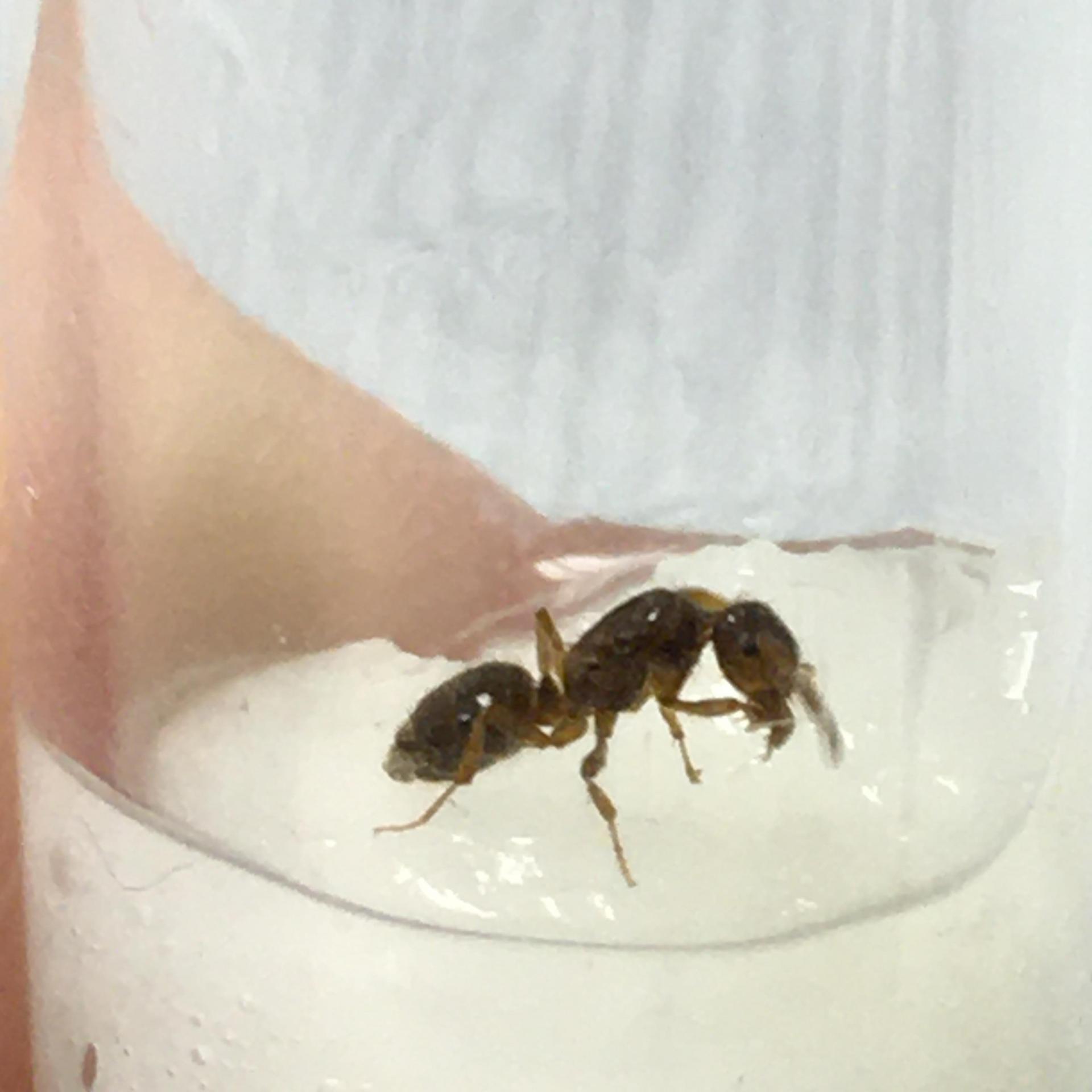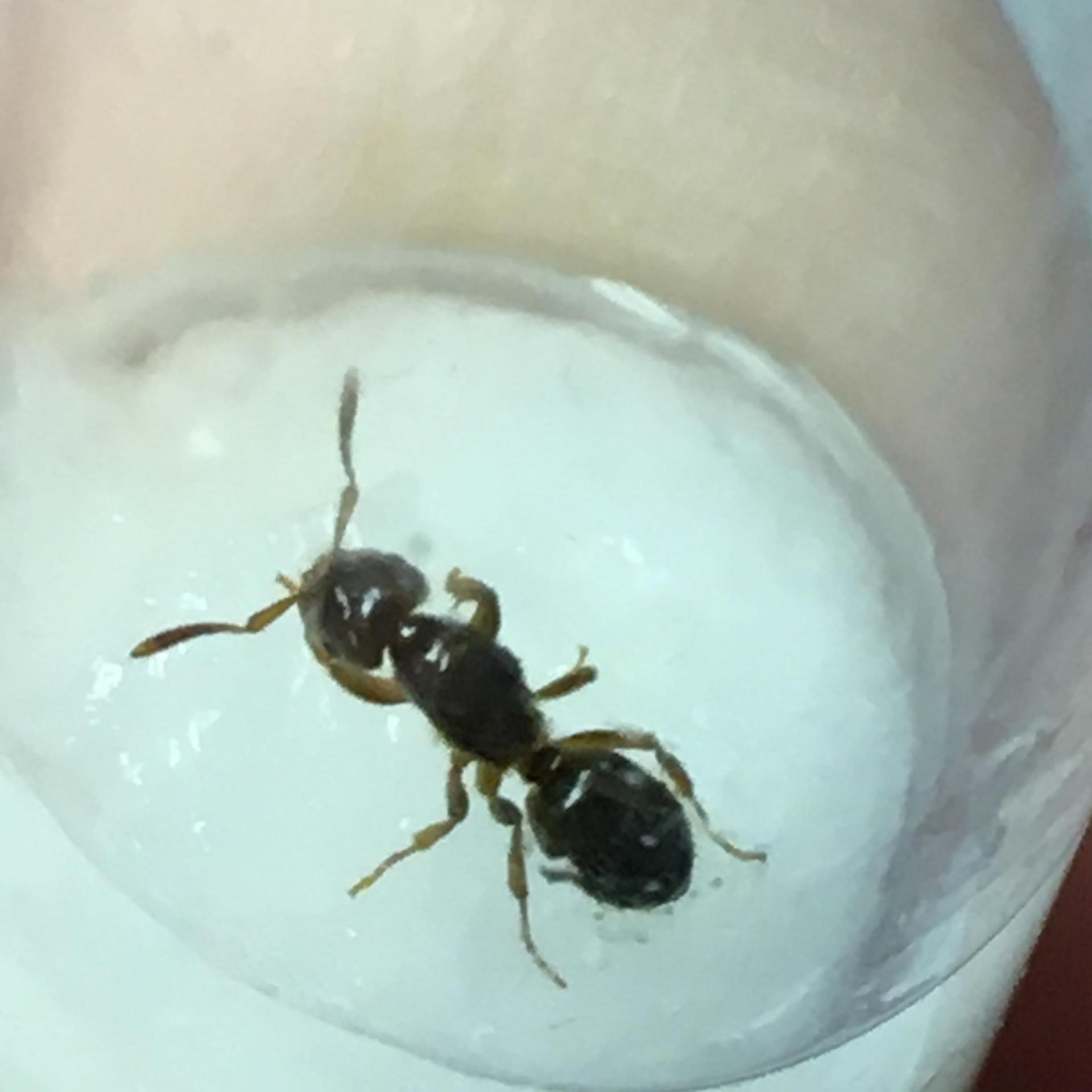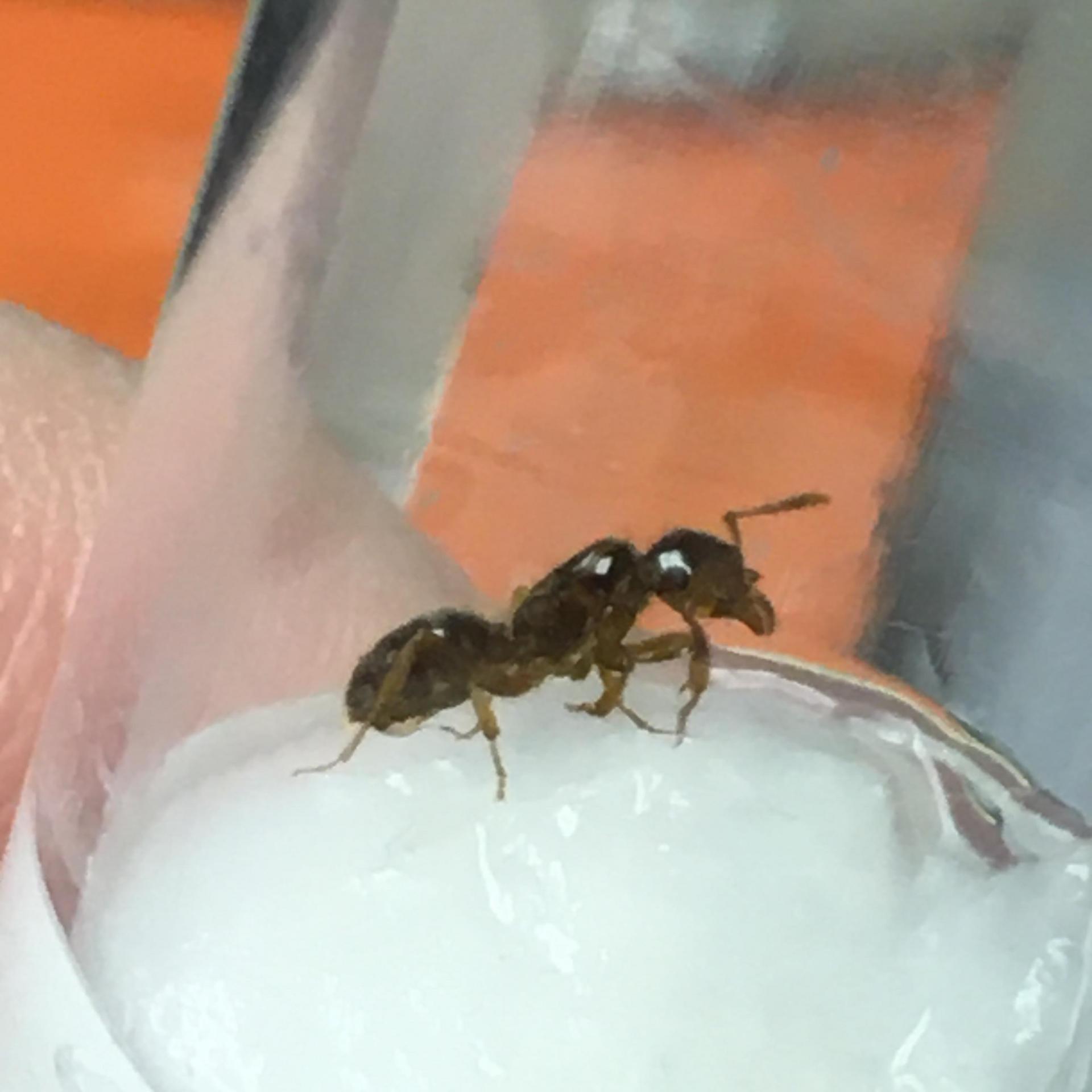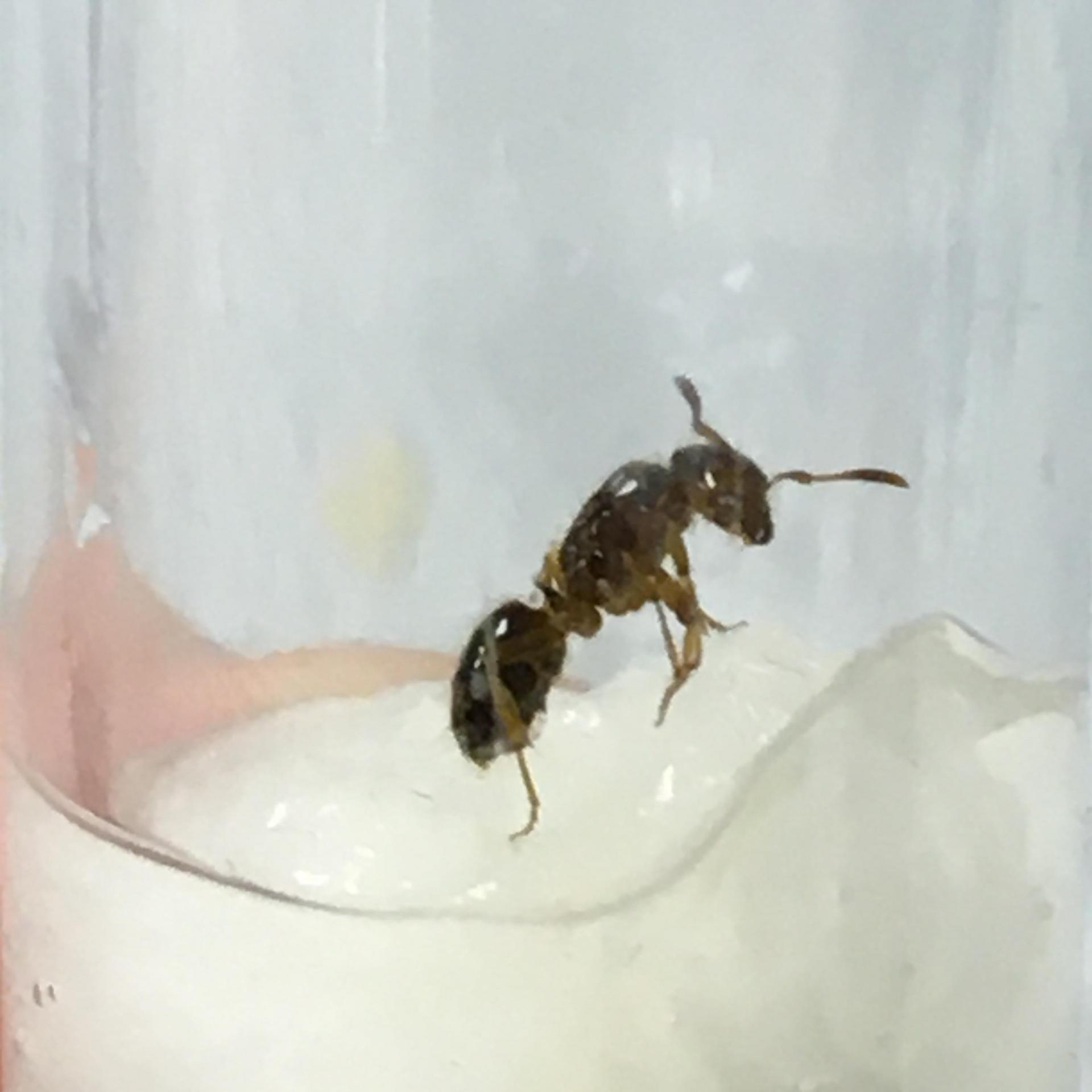Hello again! We've had yet another warm week here in Roanoke and you can imagine my surprise when I found this little lady walking down the sidewalk. I almost passed her by, thinking she was a worker, but taking a closer look I could tell she was a queen. She has the general shape of many parasitic/semi claustral queens that I have seen, but I thought I would come over to the experts to see for certain! I could not get an underside shot of her because she absolutely refuses to leave the moist cotton, but I hope what I have is enough to get a general idea. Thanks in advance for the help!
1. Location (on a map) of collection: Suburbs of Roanoke, Virginia
2. Date of collection: 3/9/21
3. Habitat of collection: Sidewalk next to a school
4. Length (from head to gaster): Between 7 and 8 mm
5. Color, hue, pattern and texture: Brown/reddish brown with light orange or brown legs; slightly hairy gaster
6. Distinguishing characteristics: N/A
7. Distinguishing behavior: Unable to climb up smooth plastic
8. Nest description: N/A
9. Nuptial flight time and date: N/A
























